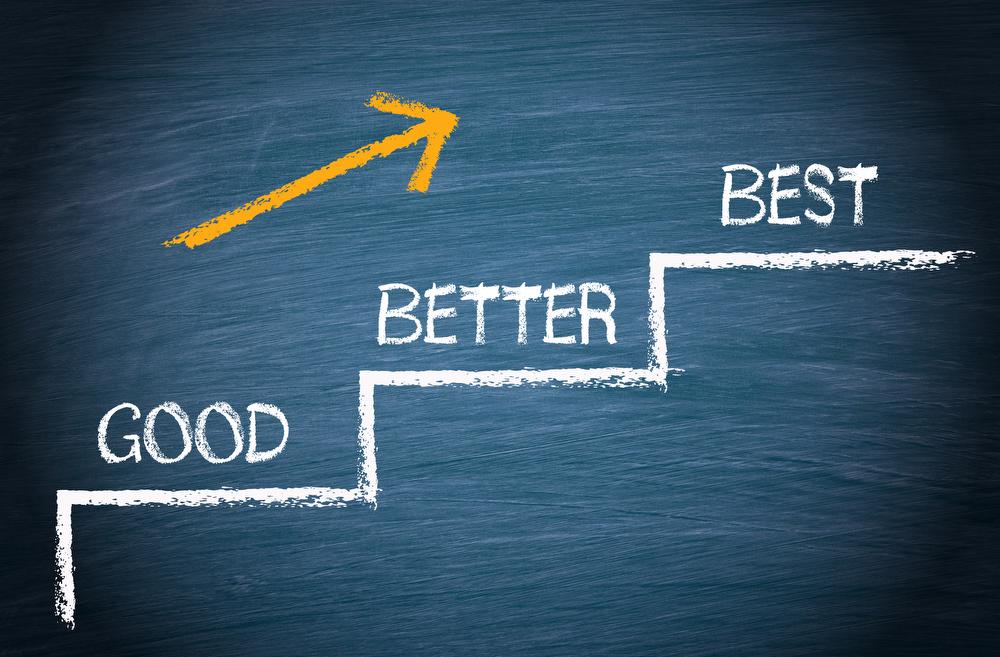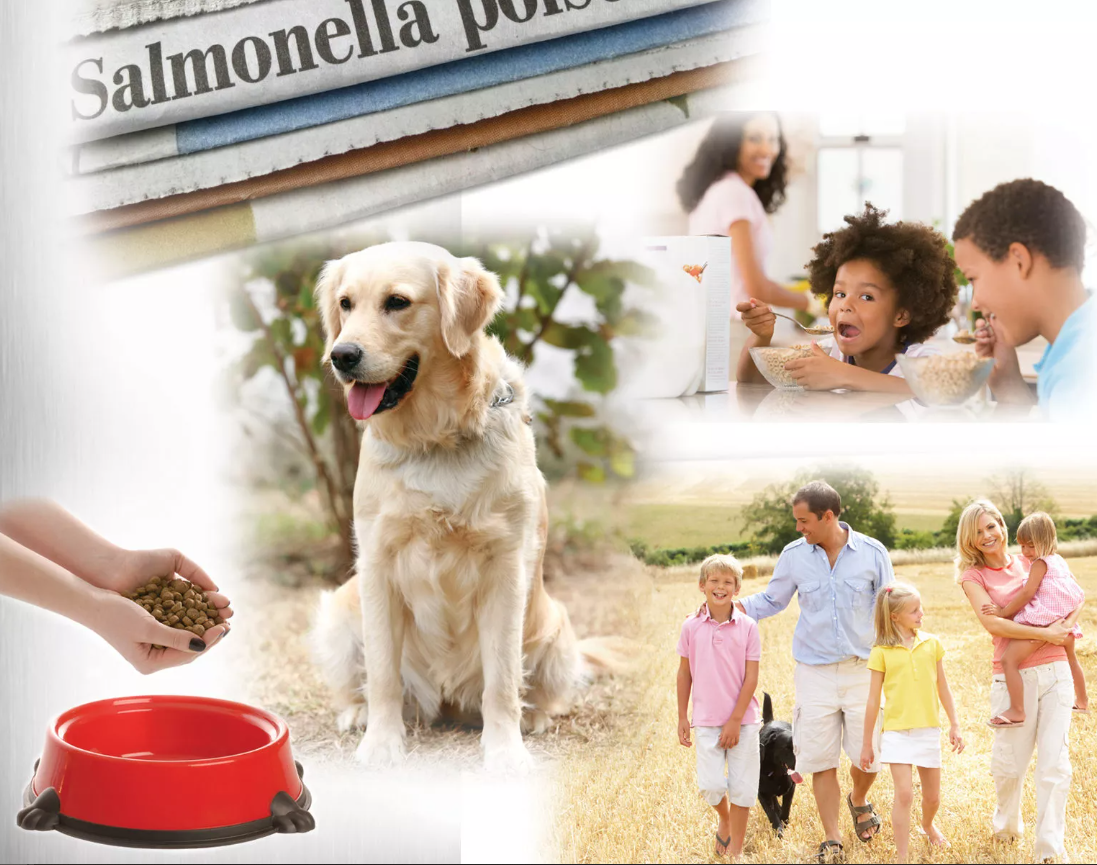A Spectrum of Answers
Good, Better or Best? Pinpointing the Right Solution for Your Manufacturing Challenge

By Jonathan Iman, International Project Manager
How often do you search Google for advice…and how often do your search terms start with the word, “best”? Best beach vacation. Best cat food. Best barber. Best vacuum for pet hair.
Google will, of course, have answers—and lots of them—but sifting through those to find the one that’s best for you is no easy task. The results are likely findings from one study, biased to one author’s opinion, or generated by an algorithm crunching data from a broad audience of people who have nothing in common with you.
What Google doesn’t factor in are the variables that make something the best for you over someone else. “Best” is highly subjective—what’s best for you may not be best for me—and it takes insight and experience to synthesize the critical pieces to make a choice that meets your needs, matches your situation, and fits in your budget parameters.
In our world, when clients are making decisions about high stakes investments—whether it’s the design of a facility, purchase of a twin-screw extruder for a new feed product, or design of a new safety protocol—the best answer is more complicated than this vs. that.
We could recommend the top-of-the-line, most expensive equipment model or plant design every time to every client, but that may not be what’s in their best interests. “Best” is not universally equivalent for every company and every situation. It’s not binary—there’s not just one good answer and all the rest wrong.
When you have a decision to make on a building or piece of equipment, you have to weigh pros and cons—but you may not know which pros and cons need weighing. One primary reason companies hire Corporate Project Services is to help identify and sort out the most meaningful considerations that lead to productive decision making. We talk through options—generally three or four, sometimes more—and we categorize those options into good, better and best.
This is what we know at CPS: The breakdown of what’s good, better and best is not the same from one client to the next. It takes a lot of information to qualify a client’s best solution, so we study the unique situation and challenges for each company before proposing a tiered array of choices…each one of which is a very valid path to take.
If the client is replacing old equipment, then a good option might be to purchase the exact same equipment, but the better route might be to upgrade. And maybe better is what’s actually best for them at this point in time. If we’re working with a startup, then the best solution may be a lower capacity model that’s scalable to accommodate growth.
It doesn’t mean “good” is bad—good is usually a solid entry point. Or maybe good meets the requirements, but you have room in the budget for a little more, so you opt for better. You can always work your way up to best.
In helping clients narrow down the right choice for right now, some of the important questions we consider are how far along are they in their business? What kind of scale-up is required in the future? What type of product is it?
We help clients assess the potential return on investment against what we see as good, better and best levels. Our goal is to match the client with the solution that most effectively meets all of their needs.
The point is, if you can’t afford the best of something then good is still a great place to start.
Maybe the best is outside your scope, but you can do better than just entry level. Or maybe the good entry point is exactly where you need to be today; so that’s what’s best for you.
Going “All in” Isn’t Always the Best Path
Sometimes it comes down to sustainability—you could go all-in on the best option, but is that sustainable for the long-term? What’s right for right now? Is it more advantageous or less risky to start with the good solution and have room to work up to the best?
Let’s look at it from another angle. In real life, there are endless ways a person can approach health and wellness, and people often fall into the trap of “all or nothing.” You commit right out of the gate to eating clean and working out every day, but is that sustainable given your current lifestyle? Maybe it is, but if you aren’t factoring in the amount of time you have available to plan meals and exercise every single day—not to mention the likelihood you’ll stay disciplined to put in the time and effort—then you’re setting yourself up for failure. Two weeks later you could be eating three sleeves of Oreos on the couch because the standards were unrealistic and unsustainable.
Maybe the right approach is to pick small changes you know you can stick with and start there. For example, a good strategy may be cutting sweets from your diet and walking 15 minutes every day. That’s your entry level, but you’re still doing something great for yourself and it gives you room to grow and evolve to even better outcomes.
Bringing it back to our world, say an aquafood manufacturer is setting up a new processing area in an existing plant. A steel structure is the least expensive option and can still achieve sanitary requirements, but it will be more laborious and take more time because there are more items to manage. We would put that in the good category.
The better option is to construct the area with a combination of steel and concrete tilt-up panels, which improves sanitation, pest control and air quality. The best option is to go with all concrete, epoxy-treated walls, which is the easiest for maintaining sanitation, but the initial construction costs are the highest of the three.
In each of those three scenarios, the client can make the exact same product at the exact same level of quality—everything we recommend is going to put clients in a position to achieve their goals while also meeting safety and sanitation standards in controlling the air, water and dirt in the facility.
The difference is in how easily they’re able to control those external factors.
Often it has to do with your own processes, and you want to invest in a solution that matches your budget, your food safety culture, your image and your standards. These are all variables we analyze before proposing recommendations.
One Size Does Not Fit All
Our services and consulting are never cookie-cutter. Everything we design is in the best interests of the individual client—we don’t simply recommend what works for “most” clients, nor do we push what’s best for CPS and Wenger.
Looking at it in terms of “good, better, best” not only helps decision-making, it’s also a tool to help clients manage the financial scope—ensuring they’re not biting off more than they can chew, investing in more than what it’s worth to their bottom line, or getting something they just don’t need.
If we designed a state-of-the-art facility that is far beyond a company’s budget parameters, then we’ve done a disservice to the client. If they’re just entering the market and want a certain process, but demand is much lower than the capacity of the machine, then they’ll end up losing money by letting that machine run idle.
Our job is to provide viable solutions that meet the client’s goals—every one of them. The good, better, best approach truly maps out viable solutions so the client can find the best choice for where they are at that moment. Personally, it helps me get in the right frame of mind when designing a facility and talking it through with the client. “Best” may be something to work toward, but “good” or “better” might be what’s best for them, all things considered.
Corporate Project Services, a division of Wenger Manufacturing, is a dynamic group of planning specialists backed by Wenger’s more than 80 years of process system supply to the industry. Our knowledge base and breadth of experience in extrusion processing and facilities construction is unsurpassed – and our commitment to excellence is recognized around the world. We welcome you to contact us if you have questions or would like to talk to one of our experts about your manufacturing project.
More Articles
 Jan 08, 2021
•
10 Minute Read
Communication is Everyone’s Job
When was the last time you did a performance appraisal on your job as a communicator?
Read More
Jan 08, 2021
•
10 Minute Read
Communication is Everyone’s Job
When was the last time you did a performance appraisal on your job as a communicator?
Read More
 Feb 08, 2020
•
10 Minute Read
Boosting Value in a Technical Manual
I can’t say I know anyone who would call an operations manual “riveting” or a “real page turner”—but here at Corporate Project Services we treat these resources as an opportunity to add value for our clients.
Read More
Feb 08, 2020
•
10 Minute Read
Boosting Value in a Technical Manual
I can’t say I know anyone who would call an operations manual “riveting” or a “real page turner”—but here at Corporate Project Services we treat these resources as an opportunity to add value for our clients.
Read More
 Nov 19, 2019
•
10 Minute Read
Navigating the High Stakes and Complexities of Food Manufacturing
Ask anyone involved in food production to name the greatest challenge facing the industry today, and food safety is sure to top the list.
Read More
Nov 19, 2019
•
10 Minute Read
Navigating the High Stakes and Complexities of Food Manufacturing
Ask anyone involved in food production to name the greatest challenge facing the industry today, and food safety is sure to top the list.
Read More